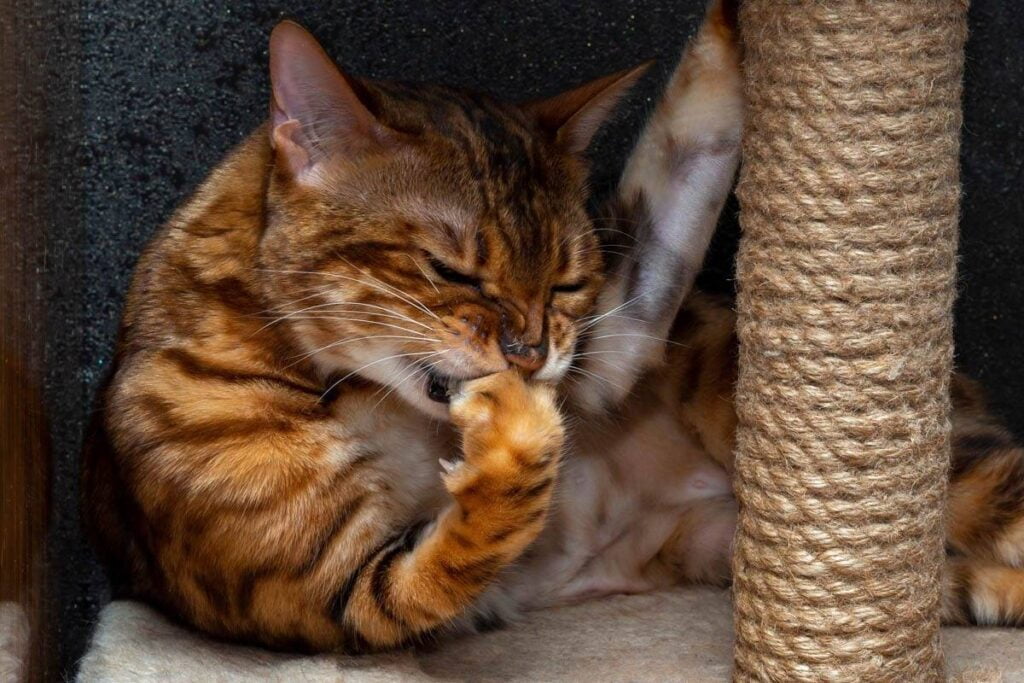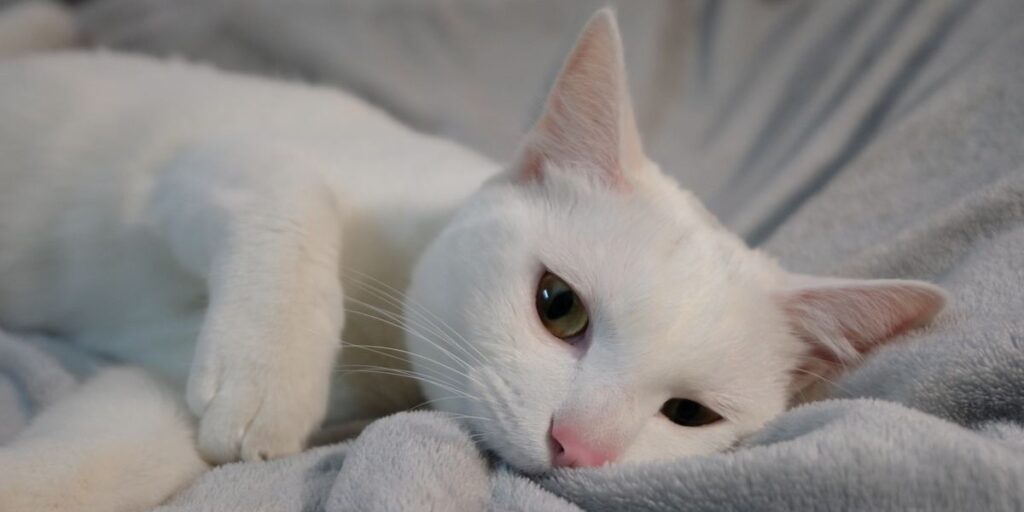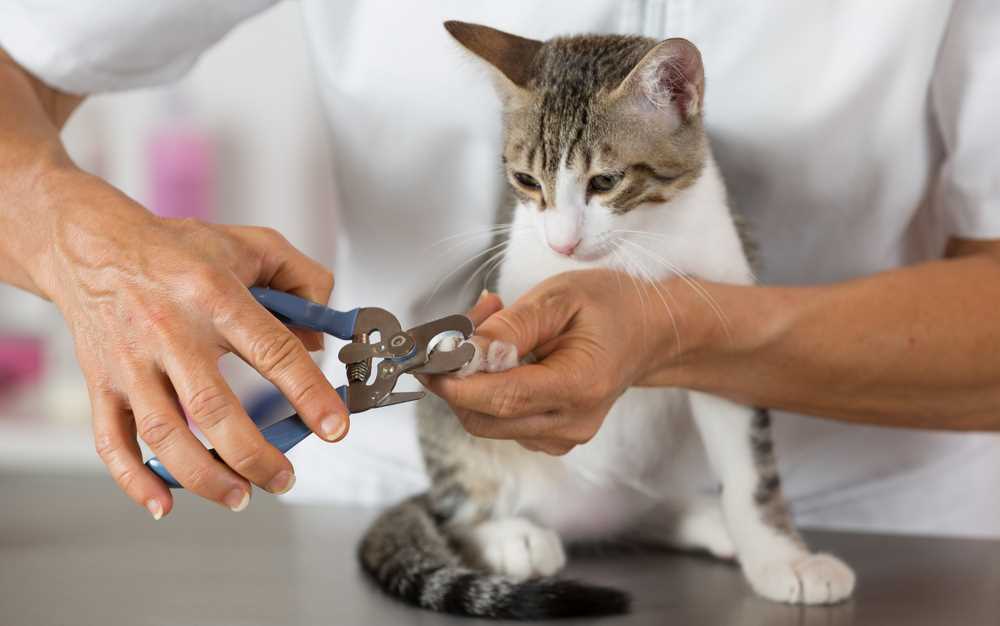How to Prevent Nail Biting in Cats

Cats have a natural instinct to groom themselves, including biting their nails. However, excessive nail biting in cats can be a cause for concern. It may indicate underlying health issues or behavioral problems.
In this article, we’ll discuss the reasons why cats bite their nails, including common problems associated with it, and how to prevent nail biting in cats.
Why do Cats Bite their Nails?
Cats biting their nails is a common and natural behavior, that is often a part of their grooming routine. It helps them to remove dirt and debris that gets trapped between their paw pads. Additionally, nail chewing can help maintain the nails and remove any broken or shredded pieces.
Other reasons why cats bite their nails include:
- Boredom: Cats can get bored, especially if they are indoor cats with limited stimuli. Biting their nails can be a way for them to alleviate boredom and pass the time.
- Anxiety: Just like humans, cats can also suffer from anxiety and stress. Biting their nails can be a coping mechanism for them to relieve stress.
- Health Issues: In some cases, nail biting can be a symptom of an underlying health issue. Issues such as such as skin irritation, infections, or painful paw pads.
- Overgrown Nails: Overgrown nails can be uncomfortable for cats. It can cause them to bite their nails to keep them trimmed.

The Problems Associated with Nail Biting in Cats
The root cause of excessive and obsessive nail-biting behavior in cats is often related to anxiety or an injury or infection. Anxiety in cats can stem from various sources, such as other animals in the household, being alone, or environmental challenges.
To reduce anxiety, owners should establish a consistent routine and provide enough exercise for their cats. In severe cases, mood-stabilizing medication may be necessary. Infections and injuries, such as bacterial or yeast infections, can also lead to a cat picking at their paws and nails. These infections may be due to genetic predisposition or contact with irritants.
If a cat’s nails are trimmed too short, it may result in infections. This is because the blood vessels in the claws are no longer protected.
Therefore if your cat continues its excessive nail-biting habits it may cause several problems, including:
- Pain and Bleeding: Continual biting can cause pain and bleeding, leading to infections and further complications.
- Destruction of Furniture: Cats who bite their nails excessively may also bite furniture or other household items, causing damage.
- Behavioral Issues: Nail biting can become a habit and can turn into a behavioral problem. It can lead to further stress and anxiety in the cat.

How to Prevent Nail Biting in Cats
Occasional nail-biting in cats is typically normal and nothing to worry about. However, if the behavior becomes excessive, intervention may be necessary. By examining your cat’s paw for any irritations or injuries, you can determine the cause. A visit to the veterinarian can help treat any infections or injuries. This can make your cat more comfortable, which in turn should reduce their nail chewing.
Here are some ways to prevent nail biting in cats that you can do at home.
- Provide Mental and Physical Stimulation: Cats need mental and physical stimulation to keep them entertained and engaged. This can include playing with toys or getting them a playmate to keep them company. Cats need company too!
- Trim their Nails Regularly: Regular nail trims can help prevent overgrown nails, which can cause discomfort and lead to excessive biting.
- Address Health Issues: If you suspect that your cat’s nail biting is due to an underlying health issue, seek veterinary help immediately.
- Reduce Stress and Anxiety: Cats can become stressed and anxious due to changes in their environment, lack of stimulation, or changes in their routine. Try to provide a stable and calm environment for your cat and consider seeking help from a cat behaviorist if needed. You can use special products such as Feliway diffusers to help your cat relax.
- Provide a Scratching Post: Providing a scratching post can help keep your cat’s nails trimmed and provide them with an outlet to relieve stress.
Signs of Excessive Nail Biting
Recognizing the signs of excessive nail biting in cats is crucial for early intervention and treatment. While occasional nail biting is normal, certain behaviors can indicate a more serious issue that needs to be addressed. Here are some key signs to watch for:
Frequent Licking and Chewing: If you notice your cat constantly licking or chewing their paws, it might be more than just routine grooming. Pay attention to how often this behavior occurs and if it seems to be increasing over time.
Redness or Swelling: Examine your cat’s paws regularly. Redness, swelling, or signs of irritation can indicate an underlying problem such as an infection or an allergic reaction that might be causing your cat to bite their nails excessively.
Bald Patches or Hair Loss: Excessive grooming and nail biting can lead to bald patches or hair loss around the paws. This can be a sign of stress, anxiety, or a medical condition that needs veterinary attention.
Changes in Behavior: Cats who are stressed or anxious may exhibit other changes in behavior, such as hiding more often, becoming more aggressive, or showing a loss of appetite. These behavioral changes, combined with excessive nail biting, can indicate a more serious issue.
Bleeding or Discharge: If you see any bleeding or discharge from your cat’s paws, it’s important to seek veterinary care immediately. This could be a sign of a severe infection or injury that requires prompt treatment.
Conclusion
In conclusion, excessive nail biting in cats is a cause for concern, leading to pain, bleeding, and behavioral problems. Preventing nail-biting in cats requires providing mental and physical stimulation, trimming their nails regularly, addressing any health issues, reducing stress and anxiety, and providing a scratching post.


